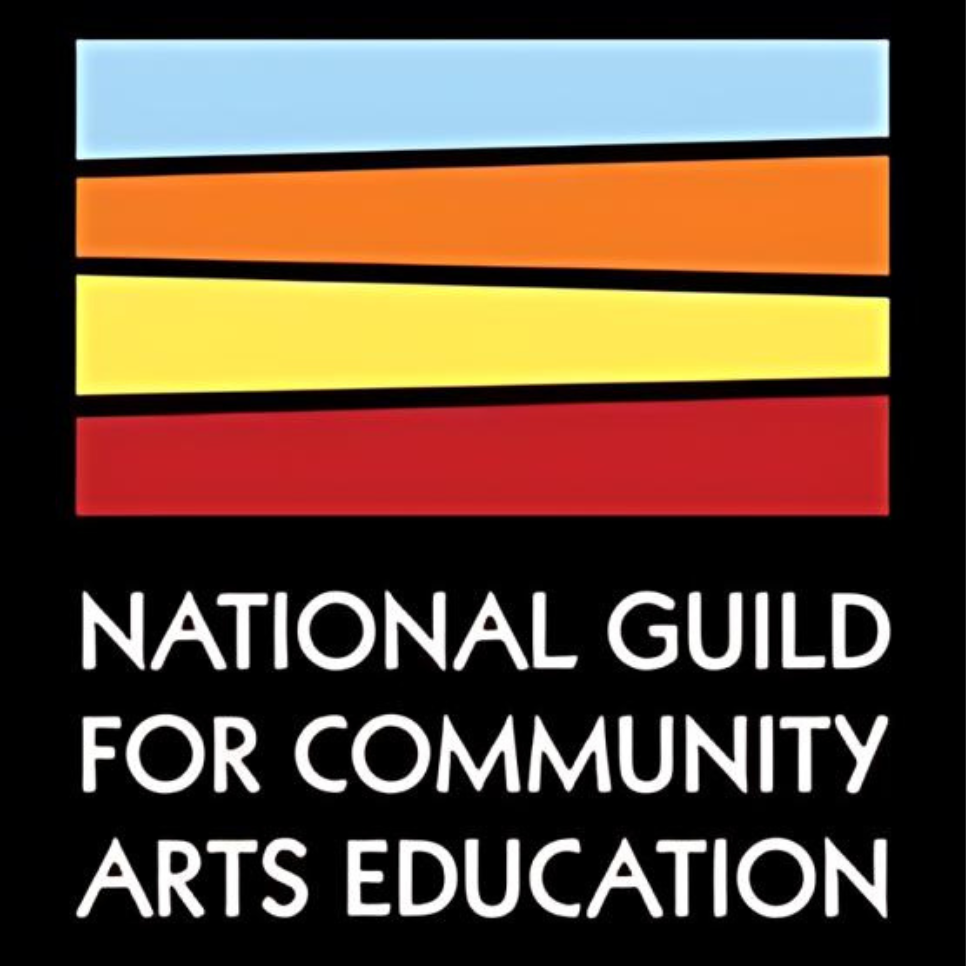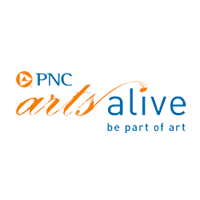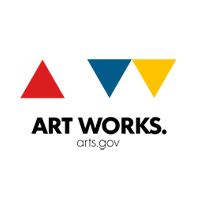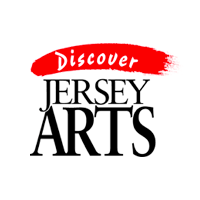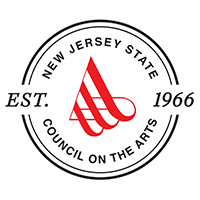What is the role of the Folklife Center at Perkins?
An introduction the Folklife Center at Perkins Center for the Arts
By Folklife Director, Marion Jacobson.
During a South Indian Diwali celebration, hundreds watch in awe as a mandala artist skillfully swirls colored rice into a vibrant circular design.
At a Middle Eastern nightclub, the dumbek (goblet drum) player synchronizes his beat to the undulating movements of the belly dancer.
In the privacy of a young woman’s bedroom in Camden, a skilled braider carefully twists her daughter’s lushly textured hair into vibrant locs.
What do all these people and activities have in common, and what do they have to do with Perkins?
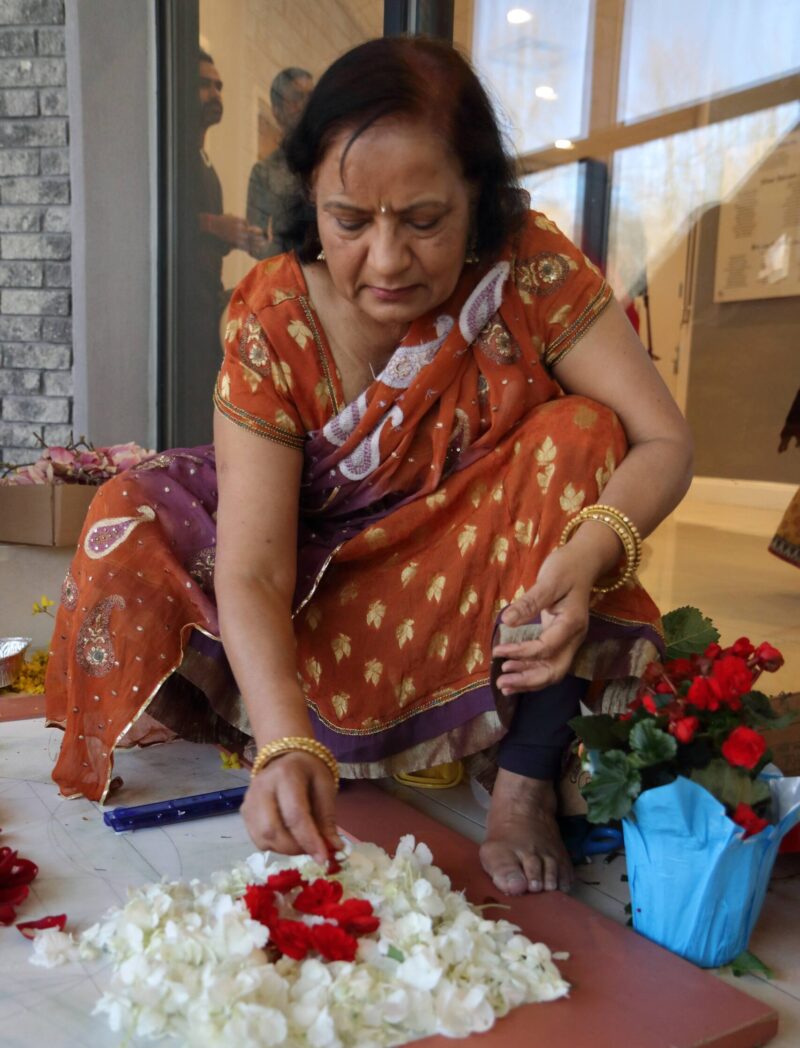
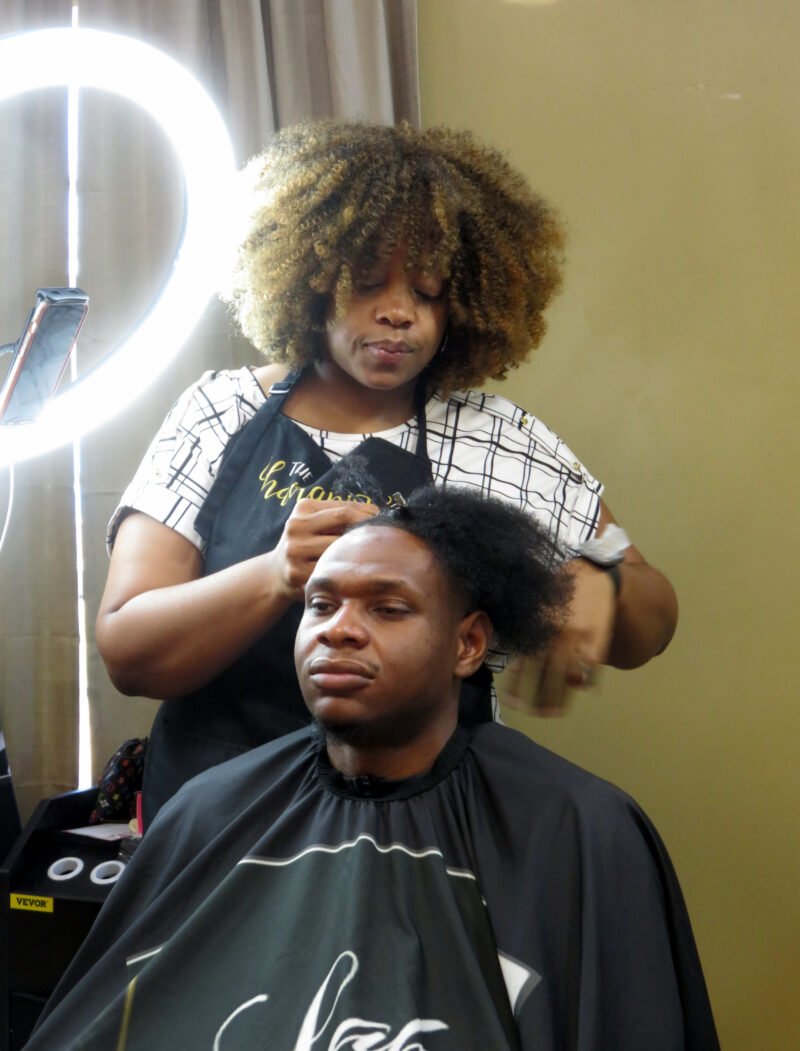
All three are outstanding tradition bearers working with the Perkins Folklife Center. For over seven years, we’ve presented mandala makers, folk musicians, African American hair braiders, duck decoy makers, and community cooks and bakers in celebration of the South Jersey region’s rich heritage and traditions.
All three are sharing traditions and cultural knowledge that have sustained their families and communities for generations. Ritu Pandya shares the ‘South Indian culture that I grew up with and love sharing with others.’ Talaya Loftin honed her craft as a second career, aiming to help her daughters understand that ‘hair is their lineage, their crown—something to be proud of as Black women.’
Established in 2016, The Perkins Folklife Center operates in partnership with the New Jersey State Council on the Arts. It is part of a network of five regional Folklife Centers where skilled “tradition bearers” like Ritu, Talaya and Lebanese-American world percussionist Joe Tayoun,engage with audiences, offer educational programs in schools,and mentor new generations. These individuals are part of a diverse group of 70+ performers, artists, and community cooks who are not typically featured at “typical” craft shows, fairs, and festivals. This is because their contributions are often not regarded as conventional “art” or “music” in the traditional sense.
But what exactly do folklife artists do, and what is folklore?
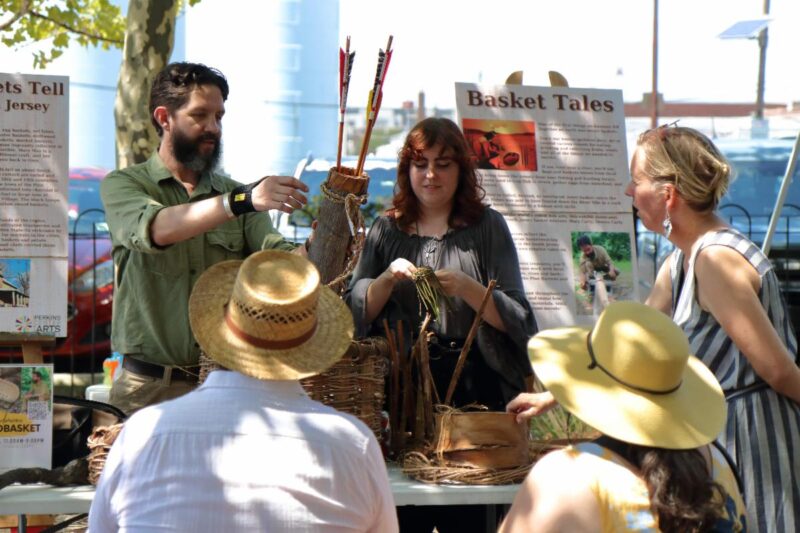 If you have ever heard one of the Brothers Grimm’s tales, you’ve tapped into folklore’s roots. Indeed the discipline of folklore dates back two centuries when scholars and aficionados of supernatural tales scoured the European countryside for legends, fairy tales, and lore straight from the lips of everyday folk (thus the designation “folklore,” meaning “the people’s lore.) But folklore delivers so much more – a nimble dance between anthropology, linguistics, comparative literature, ethnomusicology, and popular culture. It’s full of amazing insights about human behavior, creativity, and community—wherever communities are found—even the internet. If you ever chuckled over a meme on social media, you were participating in a folklore event!
If you have ever heard one of the Brothers Grimm’s tales, you’ve tapped into folklore’s roots. Indeed the discipline of folklore dates back two centuries when scholars and aficionados of supernatural tales scoured the European countryside for legends, fairy tales, and lore straight from the lips of everyday folk (thus the designation “folklore,” meaning “the people’s lore.) But folklore delivers so much more – a nimble dance between anthropology, linguistics, comparative literature, ethnomusicology, and popular culture. It’s full of amazing insights about human behavior, creativity, and community—wherever communities are found—even the internet. If you ever chuckled over a meme on social media, you were participating in a folklore event!
Folklore revolves around casual human interactions—millions of tiny acts, stories, beliefs, and arts that function as social glue, even if they often escape our notice.
To capture this richness, I frequently embark on fieldwork, documenting traditional practices. Also out there in the field, working on their own projects are two other skilled content experts and researchers trained in interviewing, photography, and the art of listening.
Paulette Young’s Crafting Crowns Project Description
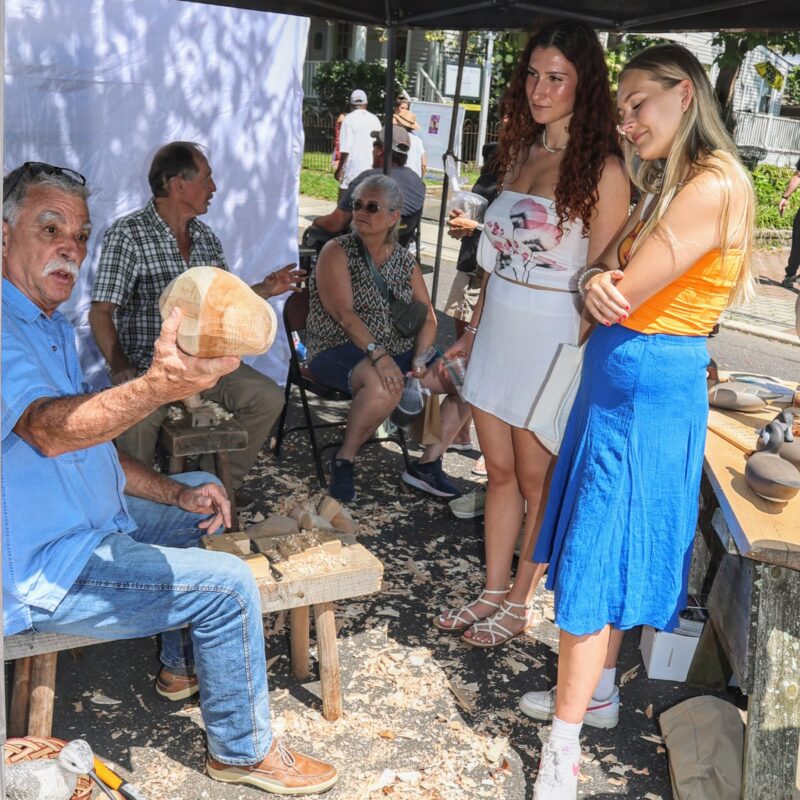 Since we serve such a broad area, we are always on the move from one fieldwork site to the next. On one weekend, I attended a Native American “rematriation” ceremony on Native land in Bridgeton, a duck decoy competition in Tuckerton, and a Latino festival in Atlantic City, interviewing community leaders, tradition bearers, and observing a new generation of younger artists and performers in the making.
Since we serve such a broad area, we are always on the move from one fieldwork site to the next. On one weekend, I attended a Native American “rematriation” ceremony on Native land in Bridgeton, a duck decoy competition in Tuckerton, and a Latino festival in Atlantic City, interviewing community leaders, tradition bearers, and observing a new generation of younger artists and performers in the making.
These activities are crucial for understanding and preserving our history and local culture. All the documentation carried out by the NJ folklorists is preserved for safekeeping. The New Jersey State Archives and Rutgers University libraries are where the materials will ultimately be housed so the public will have access to this documentation for years to come.
Read oral histories of local legends (click and scroll down for interviews)
Our public presentations of folklife and traditional artists honor and support these individuals, enabling them to perpetuate their skills. These events also foster a deeper public understanding and appreciation for our local traditions. We’re halfway through the Perkins House Concert Series, co-presented with Perkins’ Conservatory of Music. As soon as the House Concerts wrap up, Perkins will jump onto the World Stage! Both series are co-curated and planned with community members from a variety of South Jersey communities and cultures.
Perkins Center Public Programming
Folklorists work in partnership with “community scholars”, or people with knowledge of their traditional art form. Ritu, Talaya, and Joe are experts who are constantly teaching others. We always consult our community scholars when crafting programs and putting any information we put out for the public, to ensure that it represents the tradition accurately and respectfully.
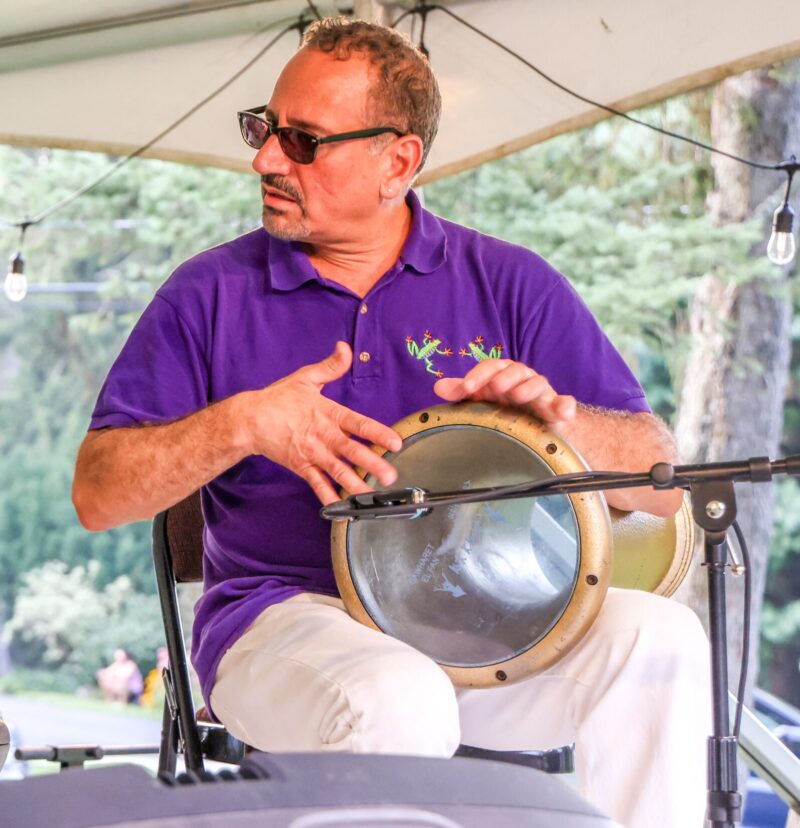
We “do” folklore for many reasons, the primary one being that Perkins’ Folklife Center is part of Perkins’ work to support and sustain “locally produced art” in all forms. Unlike most art forms created for aesthetic and entertainment purposes, folklore brings us the magic of intergenerational, ancestral, and present-day connections. That human-to-human connection happens when Ritu invites you to dip your hands into the vat of pink rice and add a wedge to the mandala. When Joe’s drum calls you out to dance. The soft touch of Talaya’s hands as she massages fragrant oil into a customer’s scalp. The joy of our work is putting these special artists front and center and setting the stage for them to show up and have people say, “Hey, I see myself in what’s happening here.” Doing folklore gives people space to listen to different voices and insert themselves into conversations about culture. Or maybe even being able to focus on the people and cultures around us a little more clearly.
The power of folklore is the power of human connection. A story, a song, a viral meme, all ask us to stop and listen. An artfully braided head turns heads, inviting us to stop and connect with an individual or group of people with whom we may not normally interact, maybe even challenge some stereotypes. Folklore asks us to act out our humanity because it gets to the essence of what makes us human.
Imagine a world in which more people engage with each other through folklore. In this world, we build our capacity to see and hear one another, you can imagine a world built upon respect and appreciation of our shared humanity.
Ready to explore the Folklife Center at Perkins? Visit our website here and follow us on social media for the latest updates and Folklife highlights. If you’re an artist eager to showcase your work, reach out to the folklife team via email at folklife@perkinscenter.org.



